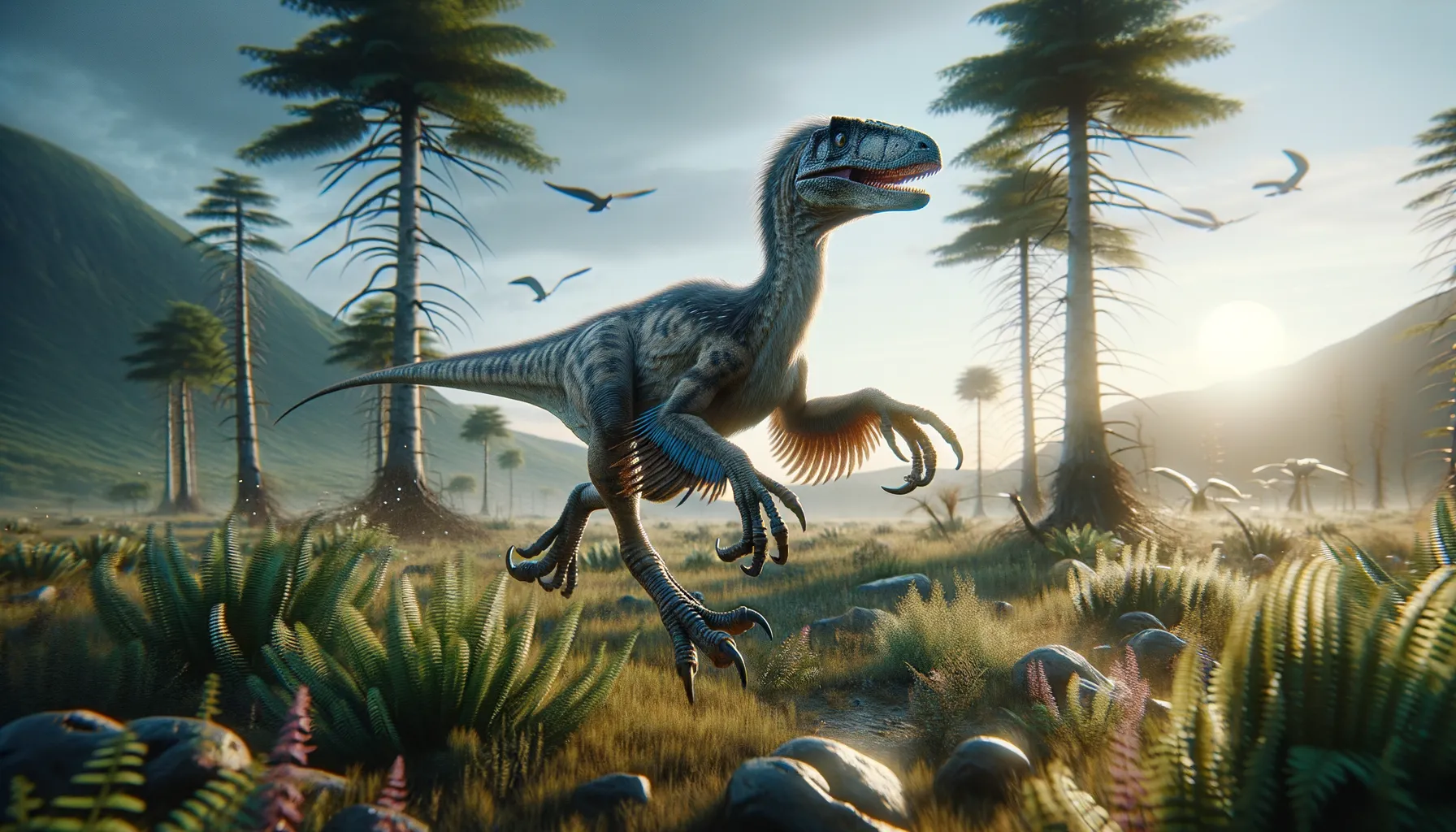
Velociraptor
Swift predator of the prehistoric world.
Period
Cretaceous
Length
Approximately 6.8 feet long.
Height
About 1.6 feet tall at the hip.
Weight
Around 15 to 33 pounds.
The Velociraptor was a small, feathered dinosaur that roamed the earth during the Late Cretaceous period, roughly 75 to 71 million years ago. It was a carnivorous theropod known for its sharp claws and quick speed. Despite its small size, it was a formidable predator, possibly hunting in packs to take down larger prey. Its physical build—with long legs and strong, curved claws—suggests it was adept at running and hunting.
Diet
Velociraptors were carnivorous, feeding primarily on small mammals, reptiles, and possibly other smaller dinosaurs. They were likely opportunistic feeders, scavenging and hunting whenever the chance arose.
Hunting
Renowned for their intelligence, Velociraptors may have hunted in packs, coordinating attacks on larger prey. Their sharp claws, particularly the infamous sickle claw on each hind foot, were used to grasp and subdue their targets.
Environmental challenges
During the Late Cretaceous, environmental conditions varied greatly, with fluctuating temperatures and periodic droughts. Velociraptors faced threats from larger predators and rival species competing for food resources. Fossil evidence suggests they adapted by hunting in groups, which helped them manage prey variability and geographic challenges.
Speed
Known for its agility and quick movements.
Lifespan
Estimated to live around 20 years.
First discovery
Discovered in Mongolia in 1923 by Peter Kaisen.
Fun Facts
- The Velociraptor was about the size of a turkey, making it much smaller than how it's often depicted in movies.
- Despite its size, Velociraptor was a fierce predator, believed to have hunted in packs.
- Velociraptor had a large, sickle-shaped claw on each foot, which it likely used to tackle prey.
- This dinosaur had feathers, meaning it looked more like a bird than a lizard.
- Velociraptors lived during the Late Cretaceous period, about 75 to 71 million years ago.
- The first Velociraptor fossil was discovered in the Gobi Desert in Mongolia in 1923.
- The name 'Velociraptor' means 'swift thief,' reflecting its agility and hunting prowess.
Growth and Development
The growth of Velociraptors involved a rapid maturation period, common in theropod dinosaurs. Fossil evidence indicates that juveniles had similar physical characteristics to adults but in smaller proportions. This rapid growth phase allowed them to quickly reach sizes capable of competing in the challenging environment.
Habitat
Velociraptors lived in arid to semi-arid regions, as suggested by geological formations found in Asia. These animals would have adapted to a range of environmental conditions, from open plains to more forested areas. Access to varied prey in these habitats played an essential role in their survival.
Interaction with other species
In their ecosystem, Velociraptors coexisted with various herbivorous dinosaurs, which likely served as prey. They also competed with other carnivorous dinosaurs for resources. Their interactions would have included both predator-prey dynamics and competitive relationships with rival predators.
Natural lifespan
In the wild, they likely lived up to 20 years.
Reproduction
Velociraptors likely laid eggs in nests, similar to other theropods, and may have displayed some form of parental care. Fossils suggest they reproduced seasonally, with group nesting sites indicating communal safeguarding of their offspring.
Social behaviour
Evidence suggests that Velociraptors may have exhibited pack-like behavior, whether for hunting or protection. Such social structure would have bolstered their success in taking down prey and defending against larger predators.
Fossil locations
Velociraptor fossils have been primarily discovered in Mongolia, notably within the Djadokhta Formation. These fossil sites provide critical insights into the life and environment of Velociraptors during the Late Cretaceous. Other potential fossils are sometimes found in nearby regions, expanding the understanding of their distribution.
